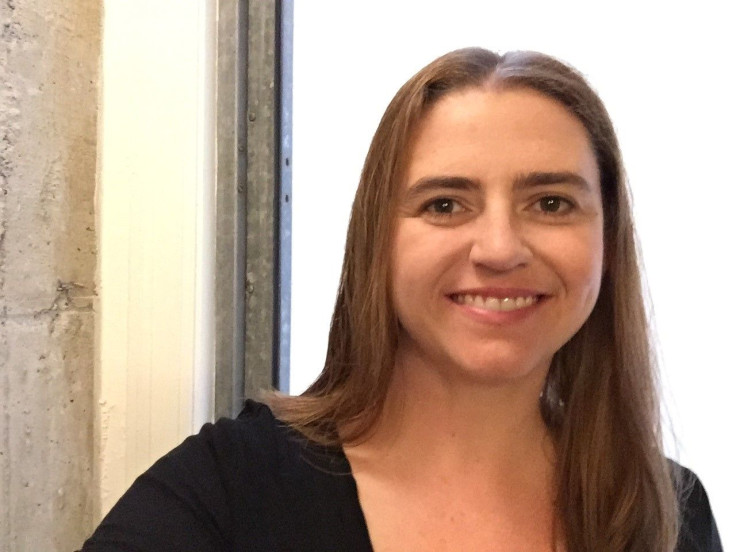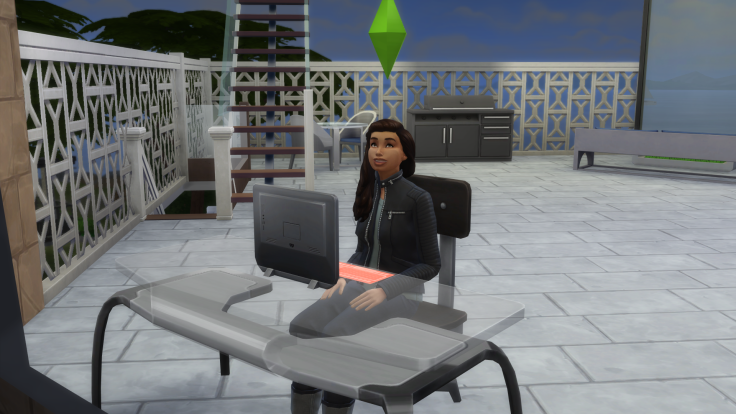Lyndsay Pearson has worked at Electronic Arts for more than a decade. Starting out as a QA tester in 2002, she’s now the executive producer of the best-selling PC game of 2015, The Sims 4 . She’s just one of the jarringly few women in the gaming industry, representing one part of the 22 percent of women in tech fields who hold a leadership position, according to a CNET report.
Stereotypes about skill and ability make women vulnerable to implicit bias before they even enter the workplace, making attaining a leadership role in a STEM industry much harder than it should be. This is in spite of the fact that women in the workplace contribute to a company’s greater performance and innovation, according to a Columbia University study.
When we talk about STEM in the context of women of color, the employment disparities only grow. The percentage of women in STEM decreases to 10 percent from 25, and are even lower in computer fields across the board. If a woman makes it to a high-paying STEM position, she’s still likely to earn 30 percent less than a man would. In a political climate where President Trump once bragged about grabbing a woman by her pussy, and half a million people attended the Women's March in Washington, D.C., it's clear bias in STEM is symptomatic of much larger, ongoing issues.
This research is fairly recent, meaning the employment numbers for women in STEM were even lower when Pearson entered school at Cogswell Polytechnical College in 1999, where she said at one point the student ratio was one woman for every 11 men. But statistics and stereotypes didn’t discourage Pearson from pursuing her dream. Her parents, both doctors, encouraged Pearson’s curiosity surrounding technology and the arts.
“I was the one who wanted the new computer and who wanted to try instant messaging the first time. I was all about whatever technology could offer,” she said. “I even had this really old tablet thing I could plug into my TV so I could draw pictures on my TV. I was very excited about the arts and technology and how that all came together.”
It was a random patient of Pearson's mother, a doctor, who advised her to look into Cogswell, one of few schools at the time focusing on game design, computer graphics and the technical arts with a small student body of 400. There was an even smaller community of women.

“The school was dominated by men because there just weren’t a lot of women going into tech. There still aren’t enough women going into tech things. I learned quickly I needed to play more first-person shooters so I could hang out more with the guys,” she said.
Even though shooters weren’t her preference, Pearson found common ground for friendships elsewhere. All the students were doing the same coursework regardless of gender -- working on art and game design, sketching, painting and learning computer graphics. She hung out with the guys in the game design club, students who were digital artists, comic artists, and in her late collegiate years, had a chance to go to the Game Developers Conference for the first time. “I never thought about that intractable element and how you could actually affect someone’s experience enjoying that entertainment. So that sort of set off an interest in the games industry,” she said.
It was a friend Pearson met at this conference who told her about a job at EA in the quality assurance department. She would soon begin work on The Sims shortly thereafter. Pearson had played the very first Sims game. She entered college when Hot Date first came out, playing an active role in the game’s modding community and making her own character skins. All of this helped her land her first job on the testing team. The first pack she worked on was The Sims: Unleashed, which introduced dogs and cats to the game.
Pearson says she has been lucky to have many superiors who are women at EA. Even if she didn’t work directly under them, they were her mentors. “If you look at our history, the leadership of The Sims for the last seven, eight years has been women. Finding allies is important because they are going to help build you up and give you that confidence when it may be a little hard on your own,” Pearson continues. “I have a friend working on a different team right now who has appointed herself my career coach and she loves to sit me down and say, ‘No you should go talk about that.’ You need someone who thinks about you that way and want to see you succeed and reminds you ‘no, you do know exactly what you're doing because you know that science has shown women tend to think that they don’t know as much as they do, which is not right.’”
A report from The Center for Research on Girls argues a lack of women mentors in STEM fields not only reinforces negative stereotypes about women in STEM, but is one of the main reasons why women have low retention rates in fields like computer science. On the flipside, female peers and role models in STEM disciplines increases retention in the field. The critical importance of female mentors in the workplace becomes all the more clear in light of a phenomenon Katty Kay and Claire Shipman fittingly call “the confidence gap” in their 2014 book, The Confidence Code: The Science and Art of Self-Assurance. Research shows confidence correlates with success just as much as competence, and women report considerably more self-doubt in job performance than men.
“It’s intimidating,” Pearson admitted, but was quick to offer solutions. “Continue to expand your network. In any circumstance you're not limited to your boss or your direct peers, you can reach out to a lot of different folks to ask for advice, ask for help, ask how to approach a challenging topic.”
Some of these challenging topics include asking for a raise, negotiating a salary, or applying for promotions, and often going through an all-male management team to do it. Studies show men initiate salary negotiations four times as often as women do. Women also ask for 30 percent less money. These same studies demonstrate that women apply for a promotion when they meet 100 percent of the qualifications for a given role, as opposed to men, who apply when they meet 50 percent.
It’s also the small stuff, often social interactions, that can disenfranchise women in the workplace and limit their ability to attain positions held by men. For example, speaking up first in situations like a meeting could be seen as blunt and received negatively among male colleagues. This could result in a woman not wanting to speak in a meeting at all.
“You can take a very active role to stop perpetuating those stereotypes and I think that’s a great way for men to be an ally in the workplace,” Pearson explains. “Notice that your woman coworker hasn’t had a chance to speak up or keeps getting interrupted. Call someone out on that.”
When working as part of a diverse team, Pearson believes there’s a shared responsibility to make sure everyone is represented. Men, she says, can help break these stereotypes by making sure everyone in the group feels like they are participating. “If I’m in a male-dominated meeting, I need to look for way to help make sure everybody in the room that has a voice regardless of their gender,” she says.
Pearson also points to bias about skills and aptitude based on gender. In the gaming industry, notions that women don’t play ‘real video games’ or are inherently less skilled are everpresent.
“I have found occasionally, and it’s never been a problem, but if I’m ever in a circumstance where we're all paying games as a team, for example, there will be a game that we might try that someone will expect that I'm just not good at all. Then all of a sudden, I'll be very good at it and people are super surprised,” she said. “Yes actually, I know how it works too. Turns out I have the same thumbs and fingers you do! Of course, it also tickles me that I just beat you at that thing that I know you thought you were going to win.”

Women as a gaming audience are widely misunderstood, Pearson explains, which helps perpetuate these stereotypes. There’s still a commonly held perception that women don’t play games at all, aside from mobile games like Candy Crush , which has been proven untrue time and time again. As of 2016, The Entertainment Software Association reports 41 percent of gamers are women. In fact, women over the age of 18 represent a significantly larger portion of gamers than boys under the age of 18. The Sims 4 is the top-selling computer game of 2015 in the U.S. ( The Sims 3 is ranked 3rd) and women represent about half of all PC gamers.
“It takes a long time to shake those stereotypes,” Pearson reiterates. “That's a very fundamental thing. In general, the industry just needs to have a better understanding that women play all sorts of games because they are motivated by the same thing men are motivated by.”
In The Sims, men and women are also motivated by the same things. Both also have the same opportunities. No Sim of any gender or skin color faces barriers or bias in the game. Feminine Sims aren’t judged for playing video games and men have the urge to play blicblock on their phone just as often as women do. Women can climb the ladder of the politics and science careers just as fast as men.
“It’s a nice picture of the world as it could be,” Pearson said. “We want to reflect a more optimistic world. Anything that could be a slightly better version of what you may see in reality, we use as a bar. Whether that’s the fact that none of the characters face any bias or judge anybody else unless it's by something silly like body odor, we create this world where it’s sort of just a more positive version of how we wish people would act, but most importantly, it's opening up a bunch of choices for our players, providing you the flexibility to tell the story you want while the world is optimistic and positive around you.”
The Sims has a much larger female audience than most games, which means the developers, regardless of gender, had to get familiar with that audience. Pearson says the team does research in fun ways, like having a roundtable lunch to talk about Gossip Girl.
“There’s something in that mentality by knowing who you are making the game for that also changes the way that your conversations go or that your meetings go, because you're focusing on an audience, not necessarily your interpersonal dynamic.”
It helps that The Sims team is diverse, but Pearson believes the demographic is probably more of a byproduct of a game which is inclusive by nature, than anything else.
“Whether that’s because The Sims is what it is, or because we have a diverse team -- sort of a chicken and egg thing. I always like thinking about it that way because I actually do think it’s the game itself that lead that charge,” she said.
While there’s still important progress to be made, there is a greater awareness nowadays about the importance of STEM fields and employment diversity than there was when Pearson entered the field in the early 2000s. The Sims has worked with organizations devoted to expanding this progress, like Smart Girls and Girls Who Code. Most recently, Pearson reached out to GLAAD as a consultant for the gender fluidity update to figure out how to best present the UI, write the descriptive tech, and write the announcement blog post in the best way possible.
“We know we were not experts in using the right language or presentation,” Pearson recalls telling the team at GLAAD, “Hey help us. This is how we want to do it, but we don't know if this is the right way to do it. Could you look at this with us and talk about this flow and help us build the right way to represent something that simple but complicated at the same time?”
Pearson is one of many women breaking into and staying in fields traditionally dominated by men, but there needs to be more like her. According to the Bureau of Labor Statistics, by 2022 there will be one million more STEM jobs requiring a bachelor's degree than exist right now. At the current pace, there are not enough qualified candidates to fill those positions. The Trump administration would be wise to take note of women like Pearson if it wants to protect American jobs. Encouraging more women to get into STEM means more skilled workers domestically, eliminating the need for companies to hire abroad. Pearson’s story is an example of why leaders in the tech industry should continue to practice strategies to ensure women thrive in STEM fields.
“I think that a lesson for other developers to take into account is if you build the game to be inclusive of all these different types of people, they are going to come and want to work on it too. That’s another way to make sure that you're continuing to expand your horizons, expand your game experience, and ultimately expand your audience,” she said. “More diverse people are going to make the more diverse games that going to be more inclusive for more people. It’s a little bit of a self-funding cycle there but I'm pretty proud The Sims has been able to do that for such a long time.”


















